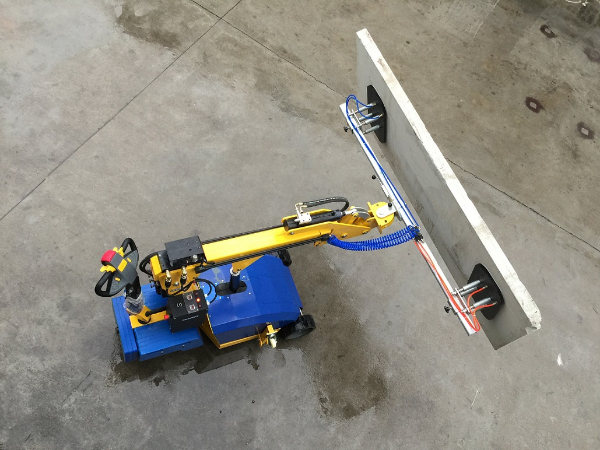
Vacuum glass lifter manipulator (Vacuum glass lifter)
Keyword:Vacuum glass lifter Time:2019-11-5 10:51:05
Vacuum glass lifter manipulator (Vacuum glass lifter)
The vacuum glass lifter manipulator has a very compact structure, which integrates all the components of the vacuum system, including the vacuum launcher. Its basic components include an aluminium alloy profile with functional components integrated between the two end caps, a sealing pad that can be quickly replaced, and an integrated plug-in ejector and control valve block. The length of its aluminium alloy profile can be changed, and the matrix of several FX/FXC can be joined together according to the requirement of use. Seals that can be quickly replaced are made of special materials and can be quickly replaced if necessary.
Its variable size adjusting device can quickly adjust according to the size of different workpieces or the special surface of the absorbed object to ensure that the glass lifter can be placed in the appropriate position. The vacuum generator and control valve block integrated in the internal manipulator accessories </a> can ensure the system to form a vacuum quickly (very short cycle time, dynamic loading and unloading and transportation), and ensure a high energy utilization rate. The large area absorption FM/FMC vacuum absorption system is a variant of the FX/FXC system. The main difference between them is that the way of producing vacuum is different. It is very meaningful to absorb workpiece by using multiple vacuum suction surfaces.
It provides users with two choices: using ejector to generate vacuum and using vacuum pump to generate vacuum. Another difference in design is that the height and size of the series are smaller and the weight is lighter; in some specific cases, these two characteristics can play a very important role. In addition, it is identical to the FX/FXC Series in application field.
Detailed description of the process of sucking and lifting objects with vacuum glass lifters: Because of the special structure of vacuum glass lifter. Drain or thin airtight space of air. Therefore, a temporary sealing space will be formed after contact with the suspended object. Through pneumatic pipelines or certain devices. The air pressure in the enclosed space is lower than that in the outside, so the pressure difference between the inside and outside produces the outside air pressure, which will tightly squeeze the object and the vacuum glass lifter together. In this way, you can see that the vacuum glass lifter sucks up the object. After reaching the destination, the closed space is connected with the external atmospheric pressure, and the SMC vacuum glass lifter is separated from the object. Vacuum suction
Calculate the suction of the suction cup. The technical parameters are as follows: Samples are selected according to suction cup.
Suction = S*P/
In cm2, S is the glass lifter area.
P is expressed as pressure by kg/cm2.
For safety factor = 2.5
The suction of a single glass lifter is 12.56 KG. The calculation condition is that the SMC vacuum glass lifter of the company is at vacuum-750 mbar glass lifter diameter 80 mm. Vacuum is - 750 mbar equal to 0.75 kg/cm2.
Horizontal suction of glass lifter
The surface of an object is smooth.
Theoretical lifting force (adsorption force)
When lifting horizontally, the lifting force is calculated according to the vacuum pressure.
F = 0.1A P
F theory lifting force (adsorption area of NA glass lifter (cm2P vacuum pressure (-kPa)
2 Vertical hoisting
The adsorptive force of vacuum pressure and the friction force between the adsorbate and the adsorptive surface of the suction cup are the force to maintain the object (the adsorptive force).
F = Mu x 0.1A P
F Theory Lifting Force (Nu: Friction Coefficient)
Adsorption area of A suction cup (cm2P vacuum pressure (-kPa)
Friction depends on the adsorbate. The roughness of the surface of the adsorbate will vary greatly. It is suggested to pass the experimental test in practical use.


- No information
-
1. Design objective of electronic crane scale network management. (1) Adopt advanced distributed data processing techno…
-
Electronic crane scale bearing platform installation to focus Electronic crane scale can be installed generally on the li…


